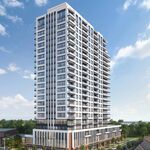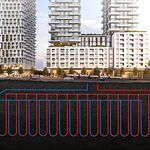A
AlchemisTO
Guest
Have you ever noticed that:
- Canadian cities have superior walking neighbourhoods with a great diversity of commercial uses along a strip. Our neighbourhoods have a lot more colour to them than theirs and we take these for granted. In Toronto we have several neighbourhoods like Hillcrest Village, the Junction, Leaside and Bloorcourt Village that don't have much folklore attached to them here, but if they were in any US city (including New York and Chicago) they would be so heavily treasured and trumped up that soon nobody could afford to live there. This is why US cities suffers from rampant gentrification and unfortunately it's something of a vicious cycle.
- American cities have superior architecture, from all eras, that they treat so casually. If downtown Syracuse were in Canada, it would see eye-to-eye with downtown Winnipeg, a city that Canadians can't help but gush over in terms of its architectural gravitas. Americans don't make the same faux- pas as Canadians do when it comes to architecture because they assign their projects a realistic budget; no green glass and cracked concrete at the bases. When Canadians attempt anything like Park Avenue, the Grand Concourse or the Magnificent Mile they end up getting University Ave. in the process: a pathetic pastiche of below-market buildings on a boulevard of weed trees in outdated concrete planters.
The most American neighbourhood in Canada is Old Montreal's financial district along St. Jacques. The most Canadian neighbourhood in America is probably the Mission district in San Francisco.
- Canadian cities have superior walking neighbourhoods with a great diversity of commercial uses along a strip. Our neighbourhoods have a lot more colour to them than theirs and we take these for granted. In Toronto we have several neighbourhoods like Hillcrest Village, the Junction, Leaside and Bloorcourt Village that don't have much folklore attached to them here, but if they were in any US city (including New York and Chicago) they would be so heavily treasured and trumped up that soon nobody could afford to live there. This is why US cities suffers from rampant gentrification and unfortunately it's something of a vicious cycle.
- American cities have superior architecture, from all eras, that they treat so casually. If downtown Syracuse were in Canada, it would see eye-to-eye with downtown Winnipeg, a city that Canadians can't help but gush over in terms of its architectural gravitas. Americans don't make the same faux- pas as Canadians do when it comes to architecture because they assign their projects a realistic budget; no green glass and cracked concrete at the bases. When Canadians attempt anything like Park Avenue, the Grand Concourse or the Magnificent Mile they end up getting University Ave. in the process: a pathetic pastiche of below-market buildings on a boulevard of weed trees in outdated concrete planters.
The most American neighbourhood in Canada is Old Montreal's financial district along St. Jacques. The most Canadian neighbourhood in America is probably the Mission district in San Francisco.






